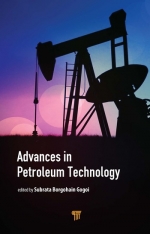Tab Article
An impending energy crisis is looming globally, which has led to the use of effluents from paper mills for enhanced oil recovery (EOR), CO2 flooding and wastewater treatment by biosurfactants, and the current market demand for cost-competitive and environment-friendly alternatives to synthetic chemicals. This up-to-date book on petroleum technology provides a comprehensive review of the background and recent advances in the field of petroleum technology and highlights various facets of the fascinating world of upstream, midstream and downstream petroleum technologies. It comprises 25 chapters, each representing the progress, prospects and challenges in petroleum research, and focuses on the tremendous progress made by the scientific community in this research field. The book covers in detail EOR processes, reservoir engineering, production operation and optimisation, pipeline transportation and storage, CO2 capture and sequestration, wastewater management and innovative treatment, refining technologies, environmental chemistry, and biochemistry and biotechnology for the petroleum industry.


